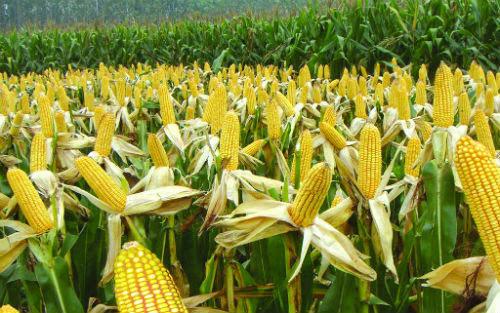BEIJING, Sept. 22 (Xinhua) -- Liu Haidong, a farmer in suburban Beijing, was elated to see his autumn harvest of "BM380" fruit corns, a kind of fresh corn with sweet juice bearing thin skin.
"It can be eaten raw just like fruits, and is savored by people of all ages," said Liu, 46, owner of a corn farm in Xiapodian Village of the city's Fangshan District.
In the past, farmers in the village have long followed the traditional farming methods, mainly planting wheat and field corn, with low yielding rates.
Like most farmers in the village, Liu works in the city and returns to the farm during the cultivation season, saving only a limited amount of money each year.
Having learned that the yield of fresh corn was several times that of field corn, Liu started growing fresh corn in 2015.
However, in the beginning, without knowledge about seeds and planting techniques, he failed to produce a good harvest and the income from his corn farm could not even cover the lease payment for the land.
The breakthrough came in 2017 when Liu's farm became a pilot base, receiving assistance from a local agrotechnical station. He was offered all-round support by the agricultural experts.
Under the guidance of experts, Liu replaced the old varieties with new varieties of high yield and good quality.
Meanwhile, through a series of innovative technologies, the traditional two-crop cultivation mode was changed, and the market time of the fresh corn has also been extended.
Besides, Liu shifted from the previous wholesale model to online sales and group-buying deals, thereby adopting an agile business mode to ensure that his high-quality fresh corns are sold at an accelerated pace.
"We have a steady stream of group purchase orders, which have accounted for 30 percent of the total sales volume," Liu said. "This year, we have had no trouble selling corn."
Confident about the power of technology and market, Liu expanded the scale of the plantation of fresh corn to about five hectares, earning a net profit of more than 60,000 yuan (about 8,838 U.S. dollars) per hectare.
"Seeing that the profit is four to five times that of field corn, my neighbors switched to fresh corn plantation one after another," said Liu.
Driven by huge market demand, the planting area of fresh corn in Beijing has been growing at an annual rate of 10 to 15 percent since 2015, and it is expected to exceed 2,300 hectares by 2020, according to a study.
"The fresh corn industry has broad prospects with high output and added values, thus meeting the requirements of high-quality development of agriculture in Beijing," said Pei Zhichao, senior agronomist at the Beijing agricultural technology extension station.
Shedding light on the future of farming, Liu mentioned a "romantic" idea: building a theme park in the cornfield to display the production process and different varieties of fresh corn, so children can get close to the land, learn about the gifts of nature, and cherish the food. Enditem




 A single purchase
A single purchase









